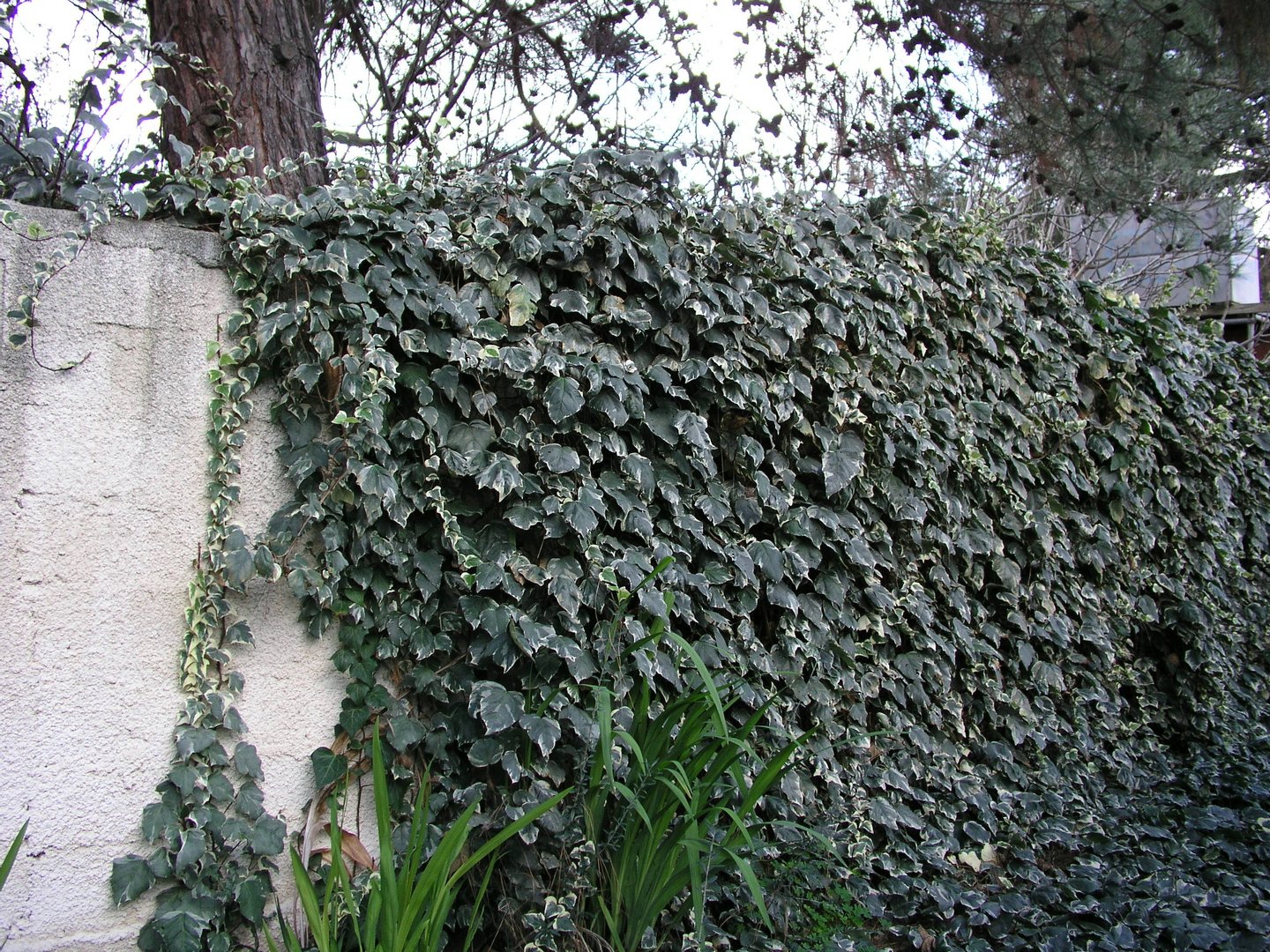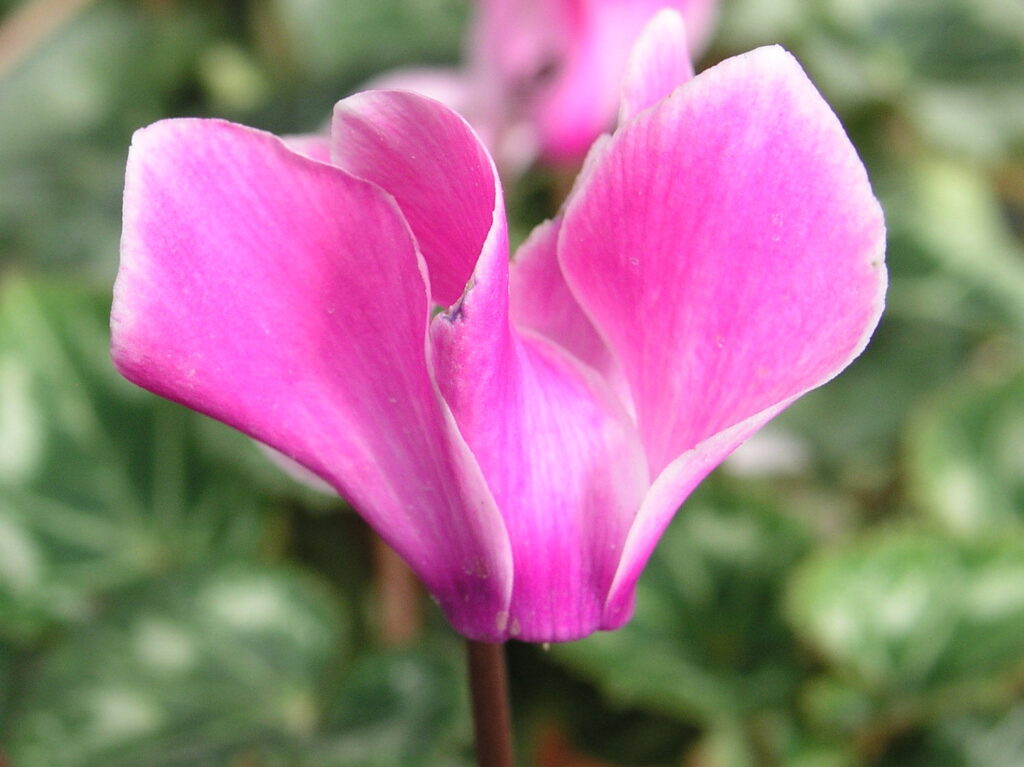by Patricia Jordan
Another strange year is coming to a close. Thankfully the garden has been my salvation again to help me through it. Having not had much to divert my attention out of the home for the second year running, I have had lots of time to devote to my plants, although I was only able to do that during the very early mornings and late evenings, as the summer temperatures were the hottest ever recorded here. I fear that the conclusions of the recent Climate Summit Conference in Glasgow was that this might become the norm, especially at this end of the Med, so perhaps it is a good time to promote my book ‘Flowering Plants for Hot Gardens’. Hopefully when this pandemic has abated we might be able to share our gardens with friends and neighbours again.
Unless you are very lucky there is always going to be somewhere in the garden in which it will be difficult to grow anything well. In my garden, which is split level, we have a huge retaining wall, against which I have a continual problem finding plants that will grow well there, as the soil is shallow and the wall cuts out any sun all year round. I tried pyracanthas a couple of times, but these South African climbers, which enjoy the sun, didn’t like the spot and apart from a few paltry flowers and even fewer berries they were a great disappointment and have since been removed. Two things that prohibit good growth are too much shade and poor soil, especially up against a wall where mortar can affect the soil content. Trees and shrubs really don’t do well with their backs against a wall as their growth may be retarded and very one-sided. Although, having said that, a slender Cypress tree planted quite some years ago there, has flourished and reached an enormous height over the years.
Virginia creeper is basically bulletproof. Drought and salt tolerant, it grows in any soil – poor, rich, wet or dry. In woodland areas it covers the ground and can move across to climb up trees or telephone poles, and will cover a wall in no time. This plant is quite easy to grow and is a good choice for shady spots where there is space to let it roam and climb. It is most vigorous in full sun, but grows well in partial shade as well as tolerating heavy shade.
Ivy is the fail safe garden climber for shade. It is self-clinging and low maintenance, but a vigorous grower that may need regular pruning to keep it in check. Variegated ivy varieties are very attractive and great for Christmas decorations and may brighten up a dull wall to which they attach themselves with suckers, without needing any support. As climbers soar above our heads, their rootstock is somewhat exposed, so I suggest growing plants in pots around the base like ferns and perhaps some spring flowering bulbs for later.
WHAT TO DO IN THE GARDEN THIS MONTH
I wonder what the weather has in store for us this month. During the late autumn as the weather cooled down flowers started to appear on the citrus trees, which is really out of season as we usually enjoy them in the spring time and watch the bees having a feeding frenzy. Hopefully there will not be more ferocious storms as we had in the ‘autumn’, a word I always use loosely here, as in my opinion we only have summer and winter seasons. Storms can wreak havoc especially amongst the citrus trees, just when we need the juice for vitamin C. Feed them this month with 20.10.10 fertiliser – three mugsful for mature trees and a mugful for young trees. This will give the citrus leaves a boost whilst the fruits are ripening. Find a spot halfway between the trunk and the tree canopy where the feeding roots are and put the food and your irrigation nozzles there. It is also not a good idea to have a hedge close to your trees, but if one is already in situ in your garden, then plant new trees about 3 metres away from it. This is a really good time to get them in, giving them a chance to settle whilst the soil is damp. Established trees and shrubs may need a tidy up. Cut out any dead or diseased branches and those that cross in the middle of the tree. The exception to this rule is plum trees, which tend to grow in higher elevations here. They should be pruned after harvesting the fruit, or they may be affected by ‘silver leaf’, a fungal disease of the wood and leaves. The fungus infects the wood through pruning wounds that have not healed, and causes a silvering of the leaves, followed by the death of the branch. Shortly though we will be able to enjoy another prunus tree with the first swelling almond flower-buds and that will be a sight to behold.
Every dog has his day and so do Poinsettias, and although they have been on sale since mid-November, their special day is December 12, so ensure that you have your plants by then in order to make the most of them. You may find them tricky to grow and watering is sometimes a problem. The best way is to hold the plant pot over a bowl and let water trickle through, before displaying them in a draught-proof place. Despite all the ease in which they are brought to the point of sale nowadays, they are still a tricky plant to keep looking good once you get them home. They need a bright spot in your living room and watering only when dry. I am sad to say that most of them will be consigned to the compost heap after Christmas. In Cyprus it is still possible to find the old species poinsettia trees in some older gardens like Terra Santa in Larnaca, whose bracts are quite different to the mass of cultivated plants.
Orchids are produced so cheaply these days (every supermarket has them on display) that they are no longer the expensive ‘special’ gifts to give to someone. They are available in wonderful colours, but beware, as some of the colours are not natural and have been artificially applied by the growers. Some growers think that cacti and other plants such as tiny fir trees should be smothered in fake snow in time for Christmas, but give them a miss, for although they may look attractive for a short while, the plants cannot tolerate the coated leaves and will soon demise.
Spring flowering plants such as freesias and chasmanthe are shooting up already and may need some staking soon to protect the emerging flowers. This is best done before the leaves become too tall. Tiny native cyclamen are pushing up their attractive, green silver-mottled leaves, which have been dormant since late spring, and it is a wonder of nature that they survive our hot weather. In the Levant, where most cyclamen come from, summers are extremely hot and a covering of leaves helps to keep them cool, although the tubers can withstand a certain amount of cold weather, too. What a splendid sight to see the huge colonies of tiny cyclamen. The speedy spread of these lovely plants is helped by ants, as they distribute the sticky seeds around shaded areas of gardens, particularly under trees and shrubs, in order to shelter them during their dormant summer season.
Plant of the Month: Cyclamen
A welcome change from the ubiquitous poinsettia at Christmastime could be a potted cyclamen, available now in garden centres in a variety of wonderful colour combinations.
These plants don’t need much feeding – otherwise they will produce lots of foliage rather than flowers. So, feed only occasionally with a house plant fertiliser if you hope to keep your plant thriving. Water from the base once the soil begins to feel dry (rather like poinsettias) and stand the plant in a saucer or shallow bowl of water until the compost is moist but not soaking wet. Then let any excess water drain away. If water collects in the base of the saucer or pot-holder, tip it out and don’t water again until the compost is almost fully dry.
Remove any dead or dying flowers or leaves by tugging them away gently. Yellow leaves in autumn or winter probably mean that the room is too warm, and that can also lead to poor flowering, or that the plant has been under- or over-watered. Bright sunlight can also be damaging so keep your plant in a cool room. Yellow leaves in spring are normal, so stop watering as the plant is dying back naturally before going into dormancy. Put your plant somewhere cool and dry for the summer – a sheltered, shady spot outdoors is ideal and keep the compost barely moist. Your cyclamen should start to re-grow in September, when you can bring it indoors, repotting it if necessary, and start watering again when you see fresh growth.
A very Happy Christmas to you all!
.









Click here to change your cookie preferences